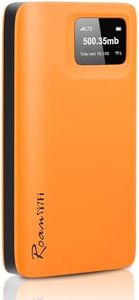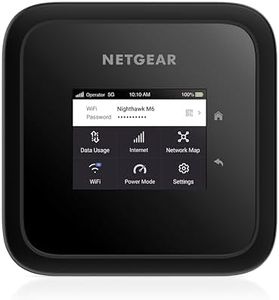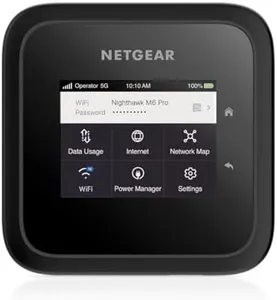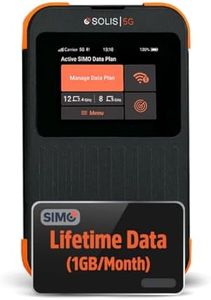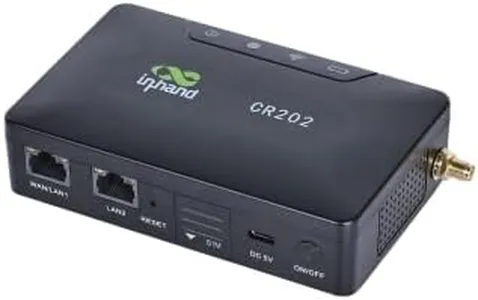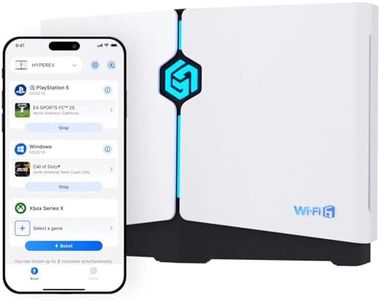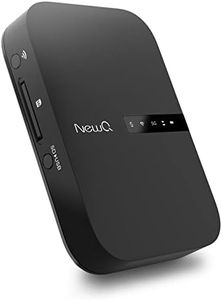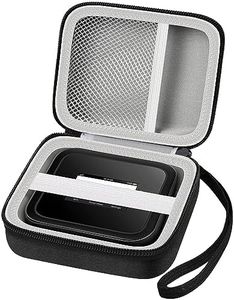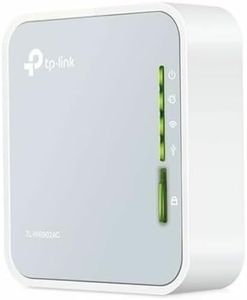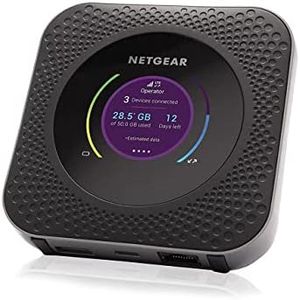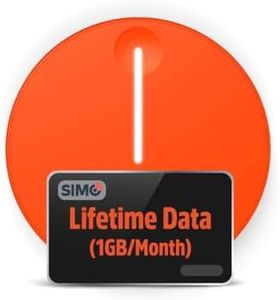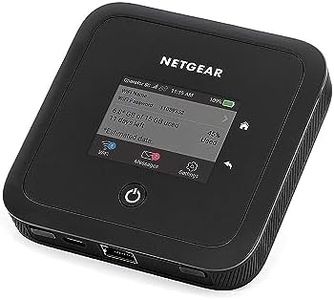10 Best Hotspot Devices 2025 in the United States
Our technology thoroughly searches through the online shopping world, reviewing hundreds of sites. We then process and analyze this information, updating in real-time to bring you the latest top-rated products. This way, you always get the best and most current options available.

Our Top Picks
Winner
TP-Link Ultra-Portable Wi-Fi 6 AX1500 Travel Router TL-WR1502X | Easy Public WiFi Sharing | Hotel/RV/Travel Approved | Phone WiFi Tether | USB C Powered | Multi-Mode | Tether App | Durable Design
Most important from
9661 reviews
The TP-Link Ultra-Portable Wi-Fi 6 AX1500 Travel Router TL-WR1502X is a versatile and compact device ideal for travelers. It supports dual-band Wi-Fi 6, offering impressive speeds up to 1201 Mbps on 5 GHz and 300 Mbps on 2.4 GHz, which ensures smooth streaming, downloading, and online gaming. Its small size (4.09 in. × 3.54 in. × 1.10 in.) and durable design make it easy to carry and robust enough for frequent travel.
The router's multi-mode support (Router/Access Point/Range Extender/Hotspot/Client/3&4G Modem Mode) allows it to adapt to various network scenarios, although it needs a 3G/4G USB modem for mobile data, as it is not a Mi-Fi device by itself. While it lacks built-in battery power, it can be powered via USB Type-C, making it compatible with power banks for increased portability.
Security features include guest mode, internet security, and parental controls, and the device simplifies public Wi-Fi usage with one-step captive portal authentication via the Tether app. Setup and management are user-friendly thanks to the free Tether App available for Android and iOS devices. However, the router does not support OpenWrt, which may be a drawback for users seeking advanced customization.
Most important from
9661 reviews
RoamWiFi 4G LTE Portable WiFi Mobile Hotspot -10GB US Local Data and 1GB Global Data 30 Days, 10 Connected Devices, Covers 170 Countries, no Contract or SIM Card Required, Travel, Home, Gaming
Most important from
1555 reviews
The RoamWiFi 4G LTE Portable WiFi Mobile Hotspot is designed for users who need reliable internet access on the go. It covers 170 countries, making it an excellent choice for travelers. One of its standout features is the generous data plan that comes with 10GB of US local data and 1GB of global data for 30 days, which can be convenient for short-term travel or occasional use. The device can connect up to 10 devices simultaneously, which is beneficial for family trips or business meetings where multiple devices need internet access.
Its internal antenna and compatibility with various WiFi standards ensure good connectivity, while the dual-band frequency offers flexibility in different network environments. The 5000mAh battery provides long-lasting power, ideal for extended use without frequent recharging, enhancing its portability. On the downside, the data plan may not be sufficient for heavy users or long-term travelers, and the high-speed internet claim might vary depending on the network availability in different regions. Additionally, the lack of a SIM card requirement is convenient but may limit the flexibility for users who prefer using their local SIM cards for data.
At 6.3 ounces, the device is lightweight and compact, fitting easily into a pocket or bag. For security, it offers basic network protections, but users seeking advanced security features might find it lacking. This hotspot is well-suited for travelers, students, and business professionals needing a portable, easy-to-use internet solution.
Most important from
1555 reviews
NETGEAR Nighthawk M6 5G Mobile Hotspot, Router with Sim Card Slot, 5G Modem, Portable WiFi Device for Travel, Unlocked with Verizon, AT&T, and T-Mobile, WiFi 6, 2.5Gbps (MR6150)
Most important from
317 reviews
The NETGEAR Nighthawk M6 5G Mobile Hotspot is a high-performance device that delivers robust connectivity for both home and on-the-go use. One of its standout features is its compatibility with multiple networks including AT&T, T-Mobile, and Verizon, allowing users to easily switch SIM cards and data plans. With Wi-Fi 6 technology, it supports fast speeds up to 2.5Gbps, making it suitable for various online activities, from browsing to streaming. The ability to connect up to 32 devices simultaneously is impressive, making it a great choice for families or teams that need multiple connections at once.
Battery life is another strength, offering up to 13 hours on a single charge, which is beneficial for travel or remote work. Users can also plug it into a power source for extended use, providing flexibility in different environments. The 2.4-inch color LCD touch screen makes it easy to manage settings and monitor data usage, adding to its user-friendly design.
While it excels in portability, weighing just 1.3 pounds, some users might find it bulky to carry around compared to smaller hotspots. Additionally, being made for use in the US only may limit its appeal for international travelers or those looking for a more global solution. The reliance on 5G networks means that in areas with limited coverage, the speed and connectivity may not be as reliable. The NETGEAR Nighthawk M6 is best suited for users who require a powerful and secure mobile hotspot, whether at home or on the go. Its capacity to handle multiple devices while providing decent battery life makes it a solid choice for families, remote workers, or frequent travelers, as long as they are within 5G coverage areas.
Most important from
317 reviews
Buying Guide for the Best Hotspot Devices
Choosing the right hotspot device can significantly enhance your internet experience, especially when you're on the go or in areas with limited connectivity options. A hotspot device allows you to connect multiple devices to the internet using a cellular network. To make an informed decision, it's important to understand the key specifications and how they align with your needs.FAQ
Most Popular Categories Right Now
